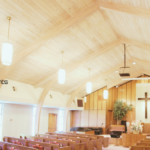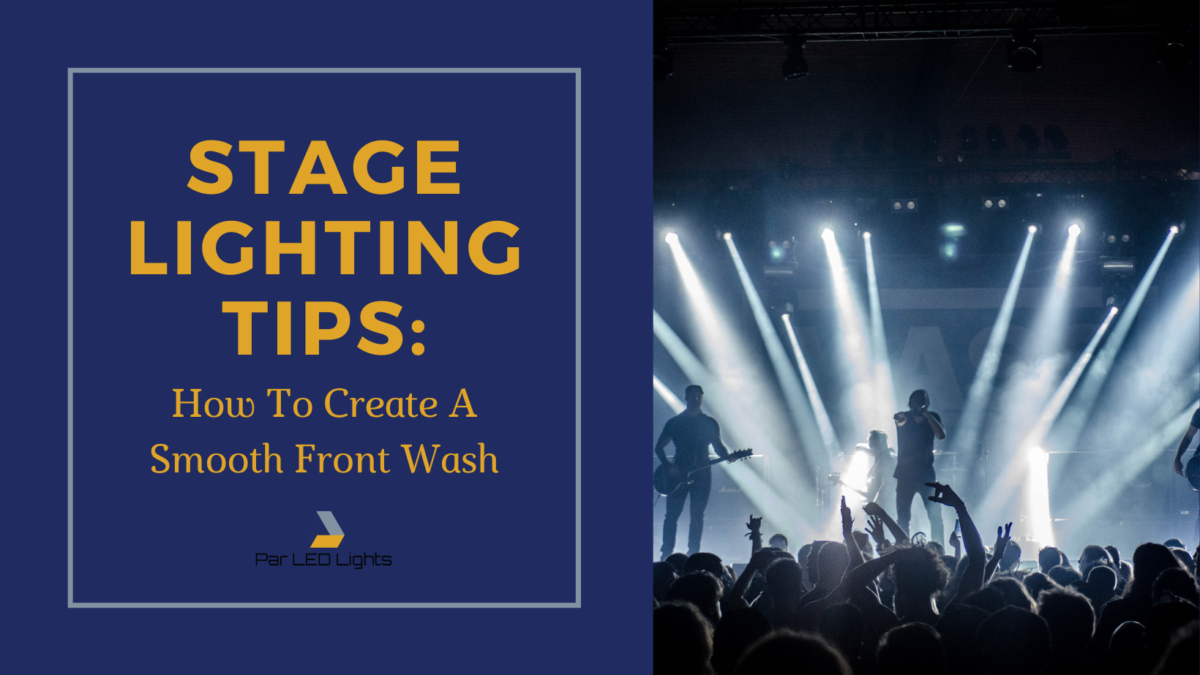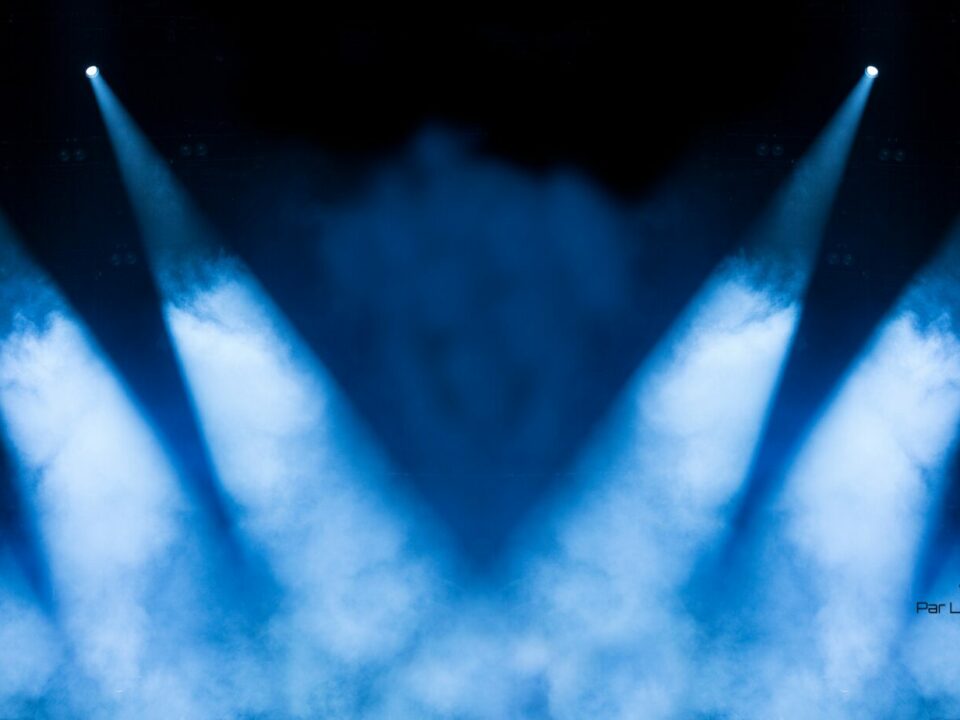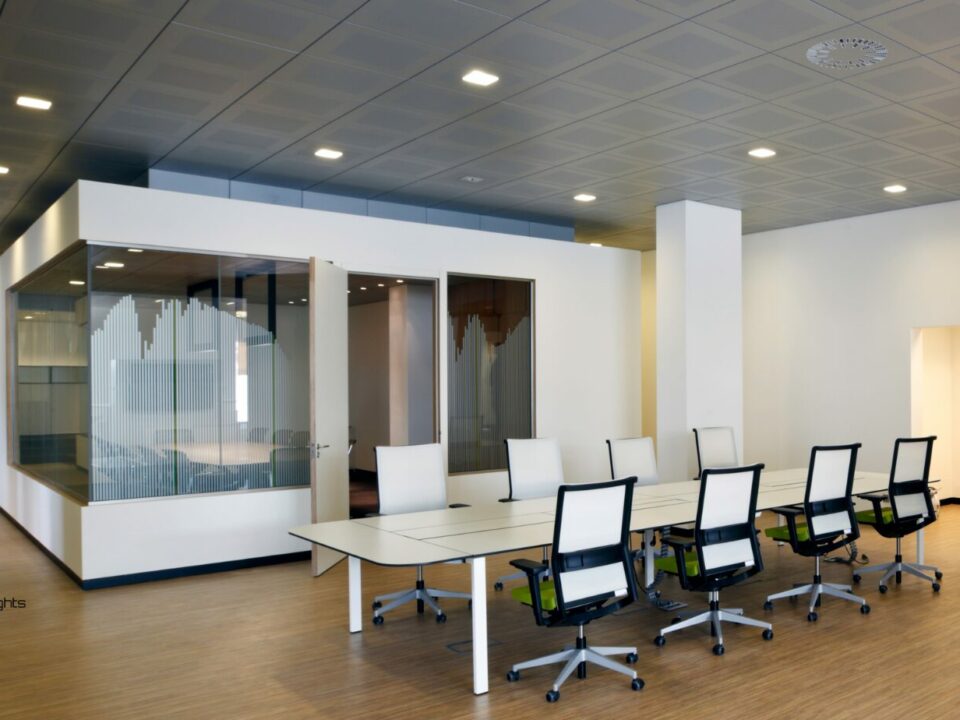
Choosing Between PAR, BR, and MR Bulbs
March 4, 2024
High Ceiling Lighting Solutions for Houses of Worship
May 5, 2024The Science of Stage Wash
Welcome to the exciting world of stage lighting, where the right techniques can make a performance shine. Our guide is for beginners and experienced lighting enthusiasts eager to enhance their skills.
We start with the essentials, showcasing how fundamental lighting is in establishing the atmosphere of any theatrical production. You’ll then learn about the concept of ‘wash’ in stage lighting – what it means, its importance, and the stunning effects it can create on stage. Skillfully applied front-wash lighting can drastically enhance performance, making it a memorable experience for the audience.
Fixtures and Positioning
Crafting a wash in stage lighting hinges on selecting and strategically positioning specific lighting fixtures to ensure optimal coverage and uniformity. Key among these are LEKO and Fresnel fixtures, each with unique characteristics suited to creating a wash. With their precise beam control, LEKO fixtures are ideal for focusing light on specific areas. In contrast, Fresnel fixtures offer a softer, more diffused light, perfect for covering larger areas without harsh edges.
The placement of these fixtures is crucial; achieving a smooth wash requires careful consideration of both the angles and distances from which the light is cast. By adjusting these variables, lighting designers can ensure that the light spreads evenly across the stage, eliminating shadows and highlighting the performance area to create a visually stunning and immersive experience for the audience.
How To Setup Perfectly
Dividing a stage into zones and deciding between focused or uniform lighting schemes is a strategic process that begins with analyzing the performance’s needs and the stage’s physical layout. Consider the types of scenes, movements, and the atmosphere you aim to create. A focused lighting scheme with tight, well-defined zones is ideal for a more dramatic effect with a clear emphasis on specific actors or props.
In contrast, a uniform lighting scheme with broader zones works best for general illumination or scenes requiring consistent visibility across the stage. Once you’ve planned your zones, mapping them out on a stage plot helps visualize their coverage and relationship.
- Map the Stage: Create a detailed stage plot indicating the location of each lighting zone.
- Select Your Fixtures: Based on your zoning decision, choose LEKO for focused lighting or Fresnel for a more uniform wash.
- Positioning Fixtures: Install fixtures strategically, ensuring they cover the designated zones. For focused lighting, aim fixtures directly at the specific points; for uniform lighting, space them evenly to cover broader areas.
- Adjusting Angles: Aim each fixture at a 45-degree angle to the stage for optimal coverage, adjusting as necessary for desired lighting effects.
- Setting Intensity: Start with a general baseline intensity for each fixture and adjust up or down to achieve balanced lighting across the stage. Use a light meter to ensure even coverage.
- Fine-tuning: Watch rehearsals to see how the lighting affects the performance. Adjust fixtures’ positioning, angle, and intensity as needed for the perfect balance.
Advanced Techniques and Considerations
Leveraging color temperature in stage lighting is a powerful technique for emotionally charging a scene—warm hues can foster a sense of comfort and closeness, while cooler tones might suggest sadness or distance. Integrating dimmers and filters becomes essential to achieve an even lighting intensity across the stage.
Dimmers allow users to adjust light levels smoothly to fit the scene’s emotional tone, ensuring natural lighting transitions.
Filters, on the other hand, can modify the intensity and spread of the light, guaranteeing uniform coverage without over-illuminated spots or unwanted shadows. Through careful experimentation and adjustment during rehearsals, these tools allow for a nuanced control over the visual mood, enhancing the audience’s emotional experience.
Challenges & Solutions
Creating a front wash comes with its share of challenges, from uneven lighting distribution to color inconsistencies across the stage. However, these common issues can be effectively managed with the right strategies. Solutions include using a combination of different types of fixtures to ensure a balanced spread of light, adjusting the angle and intensity of lights to avoid shadows and hotspots, and employing color correction filters to achieve uniform color temperature. Additionally, using barn doors or gobos can help control spill and direct light precisely where it’s needed.
Through these adjustments, a front wash can significantly enhance performance, casting actors and scenes in the optimal light to convey emotions and themes powerfully, ensuring clarity and visual appeal that captivates the audience.
- Combine Fixture Types: Use both LEKO and Fresnel fixtures to balance focused and diffused light across the stage.
- Adjust Angles and Intensity: Fine-tune the direction and brightness of each light to eliminate shadows and even out hotspots.
- Employ Color Correction Filters: Standardize color temperatures across different fixtures to maintain a consistent look.
- Test and Re-Test: Continuously check the lighting effects during rehearsals to identify and rectify any issues before the actual performance.
Ready to Buy?
In closing, mastering the craft of creating a seamless front wash opens doors to a world of dynamic stage lighting, where every performance can shine with brilliance. From understanding the fundamentals of lighting to selecting the perfect fixtures and fine-tuning their placement, each step is pivotal in crafting unforgettable experiences for audiences.
With our guide and expert tips, you’re equipped to overcome challenges and unleash the full potential of your stage lighting. So, why wait? Bring your vision to life today – explore our range of lighting solutions and buy online now to illuminate your next performance with unmatched precision and allure.









